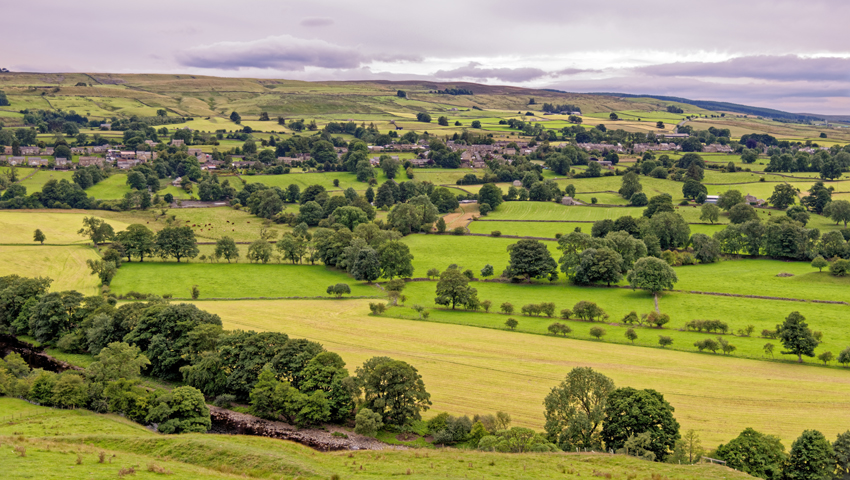Victoria Balfour, writing originally for the Sustainable Food Trust, says that county farms, once considered a prized asset for UK local councils, are in danger of becoming extinct. A recent report revealed that the number of county farms has shrunk by half in the last 40 years. According to the most recent Defra figures, between March 2017 and March 2018 alone, councils across England sold off 2773 hectares of farmland. The legacy of privatisation and austerity measures that have taken place since the 1980s has led to some councils to make the decision to sell off these family jewels in a bid to sustain themselves financially in the face of increasingly restricted funding. The number of small farms is dramatically declining. This includes county farms which are usually under 100 hectares in size. This decline is making access to land increasingly difficult for new entrants. At a time when we should be investing in our future farmers and food production, we are selling off the very means to do this.
In 1970, the Agricultural Act stated that “[smallholding authorities] shall make it their general aim to provide opportunities for persons to be farmers on their own account by letting holdings to them”. However, the idea of “county farms” has been around for much longer. During the late Victorian agricultural depression, where advancements in cheaper transport allowed food imports from abroad into the country, local grain and meat prices plummeted. In the face of crippling rural poverty, MP Joseph Chamberlain championed radical land reforms in the form of “three acres and a cow”, considered the ideal amount of land for landless tenant farmers. This was finally given the official title of “County Farms” or “County Smallholdings” in the 1920s. Their numbers continued to grow until the Second World War, playing a vital role in offering work to returning servicemen. Since then county farms have been providing opportunities for new entrants to farming to get a foot on the ladder, as well as farmers wanting to progress further.
Catastrophically for these prospective farmers, over the last 40 years this trend has been reversed. In 2010, Somerset sold off two-thirds of its county farms whilst in 2015, Herefordshire council announced the sale of 59 lots, amounting to 1700 acres, almost its entire smallholding estate, affecting 45 families. Last year, Staffordshire sold off 20% of its estate to raise money for infrastructure whilst nine counties in Wales were reported to have sold 458 acres in 2015 alone.
As farmers are an increasingly aging population, with an average age of 60, there is an urgent need for a new generation who can bring innovation and energy to a sector that so desperately needs it. Yet, with the [high price of farm land], it is out of reach for all but the wealthiest of potential farmers. Traditionally, this is where county farms would come in. “Most local authority farms are let to new entrants,” explains George Dunn, Chief Executive of the Tenant Farmers Association and lifelong supporter of county farms. “Without them, new entrants are losing a main route into farming, perpetuating the high barriers and family dynasties in the industry.”
Graeme Willis, the agricultural lead at the Campaign to Protect Rural England (CPRE), agrees. He says that council, or county, farms are increasingly rare – but they are incredibly important.
“Council farms are a particular kind of local resource and a terrific asset to farming generally.
“These kinds of farms, usually owned and run by local councils, were set up at the end of the 19th century to provide a way into farming, and they still allow these opportunities today – including for young people who might not otherwise have a route into farming.”
In a useful explainer on the CPRE website, Willis explains that council farms have evolved in exciting ways, “trying out new business models such as farm shops and cafés, agroforestry and other environmentally friendly ways of managing land. Some councils with council farms have described the brilliant benefits they provide, ranging from tree planting to local education initiatives to, of course, continuing to support new farmers.”
There is a problem however. “There are far fewer council farms now than in the past. The area of England that these farms cover has dropped by around half since the late 1970s, when the effects of privatisation and cuts began to be felt. Land from these farms has been sold off, meaning there are fewer opportunities for future generations to move into farming.”
But council farms remain special and essential. “They’re a brilliant resource to their local communities,” writes Willis, “offering chances for people who might not be able to afford to buy a farm to enter farming. They can also act as a testbed for new and innovative practices in both farming and other ways of making money, such as shops and tea rooms.
“They’re also a great source of food, which can be supplied to nearby schools and hospitals – another local benefit (which also limits food miles). These farms can also give people the opportunity to interact with animals and the natural world, which we know contributes to health and wellbeing.
“If run in certain ways, such as ensuring biodiversity is supported, they can deliver environmentally sustainable farming which can make a real difference in tackling the climate emergency.”
Willis concludes that “CPRE are big fans of council farms, and really value them as community assets. We’d like to see more funding to help councils set up, keep or enhance these local resources, and to keep being able to offer ways for young people to enter farming.
“And of course, because we’re committed to looking at ways that the countryside can play a part in addressing the climate emergency, we really value what these farms can offer in terms of mitigating the impact of climate change.”
